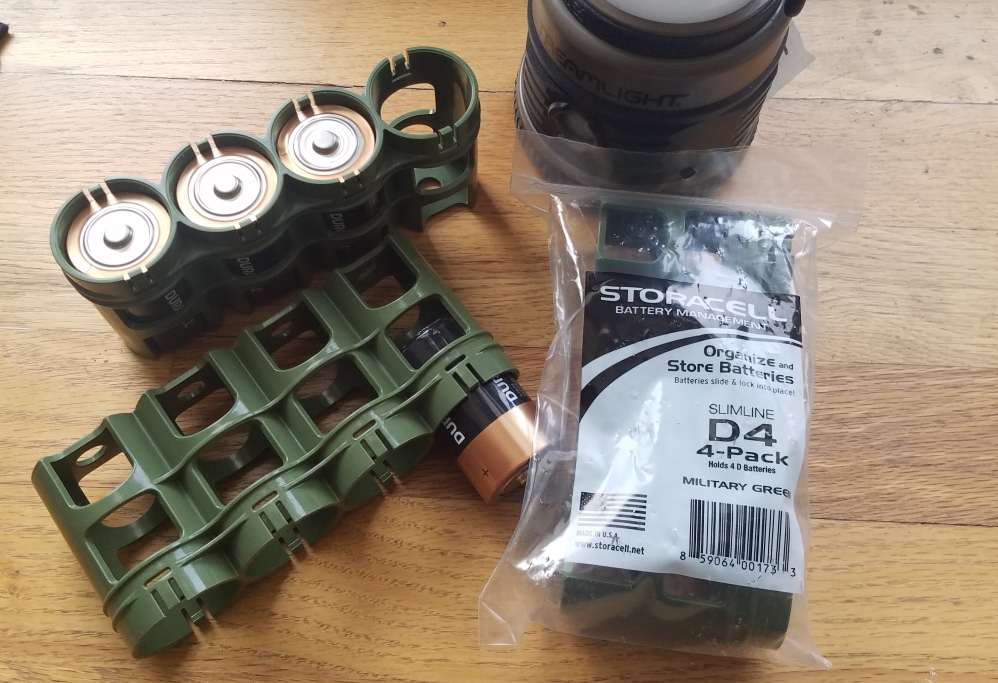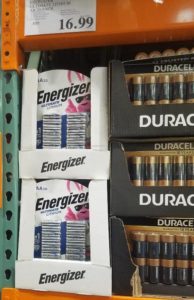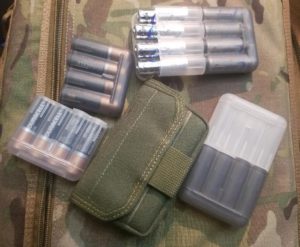So the general consensus, it seems, is that leaving non-lithium batteries in a device for any appreciable length of time is a recipe for trouble. As I mentioned earlier, on the devices that I do leave batteries in, I’m instituting a periodic inspection schedule to make sure things don’t spiral out of control.
But, really, the solution is to not have batteries in the device until such time as that device is needed. Makes sense, right? The problem is that anytime you have two items that need to be combined together to be effective, and you keep those two items separate from each other, you introduce a potential point of failure. The very easy example is keeping a loaded magazine separate from the gun.
So, to my way of thinking, the solution is to keep the batteries separate from the device to avoid damage, but near enough to the device as to be available for immediate use. So, with that in mind….
 What we have here are, essentially, shotgun-shell holders for batteries. Here’s the link to the manufacturers information, and, of course, I just snagged ’em offa Amazon:
What we have here are, essentially, shotgun-shell holders for batteries. Here’s the link to the manufacturers information, and, of course, I just snagged ’em offa Amazon:
The shotgun shell analogy is pretty accurate. There are two tabs, such as youd fend at the end of a magazine tube, that hold the batteries in place. They’re quite secure. The more astute of you will notice that this thing doesn’t provide any environmental protection…that is true. But what it does do is give you a secure storage for batteries that can be lanyarded to your device of choice.
 You could argue, I suppose, that you simply keep the lantern and the batteries in the same box in storage and that obviates the need for this sort of thing. True, but preparedness is about removing or mitigating as many potential problem points as possible. For me, having the batteries lanyarded to the device gives me the virtually the same benefit of the batteries being left in the deivce but without the attendant risk.
You could argue, I suppose, that you simply keep the lantern and the batteries in the same box in storage and that obviates the need for this sort of thing. True, but preparedness is about removing or mitigating as many potential problem points as possible. For me, having the batteries lanyarded to the device gives me the virtually the same benefit of the batteries being left in the deivce but without the attendant risk.
No doubt the poverty-preppers will say that the same effect could be achieved with a small plastic bottle scrounged from the kitchen garbage and a little duct tape. May be. But my career goals have hit the point where I can insulate myself from future risk without resorting to using garbage. When its oh-dark-thirty and the power goes out in a blizzard, I don’t mind having spent ten bucks for the security of having the batteries where I need them when I need them. :::shrug::: Your choice.
If you really wanna go full Burt Gummer, the guys over at County Comm have battery safes that will do the PERFECT job but be prepared to pay a bit more than what you might feel comfortable with. I actually use the County Comm ones to keep two lithium AA-batts in my Bag O’ Tricks.
Anyway, thats the direction I’ve decided to go in in regards to not keeping batteries in devices while still keeping the batteries close at hand. YMMV, but to me it seems a good solution.




